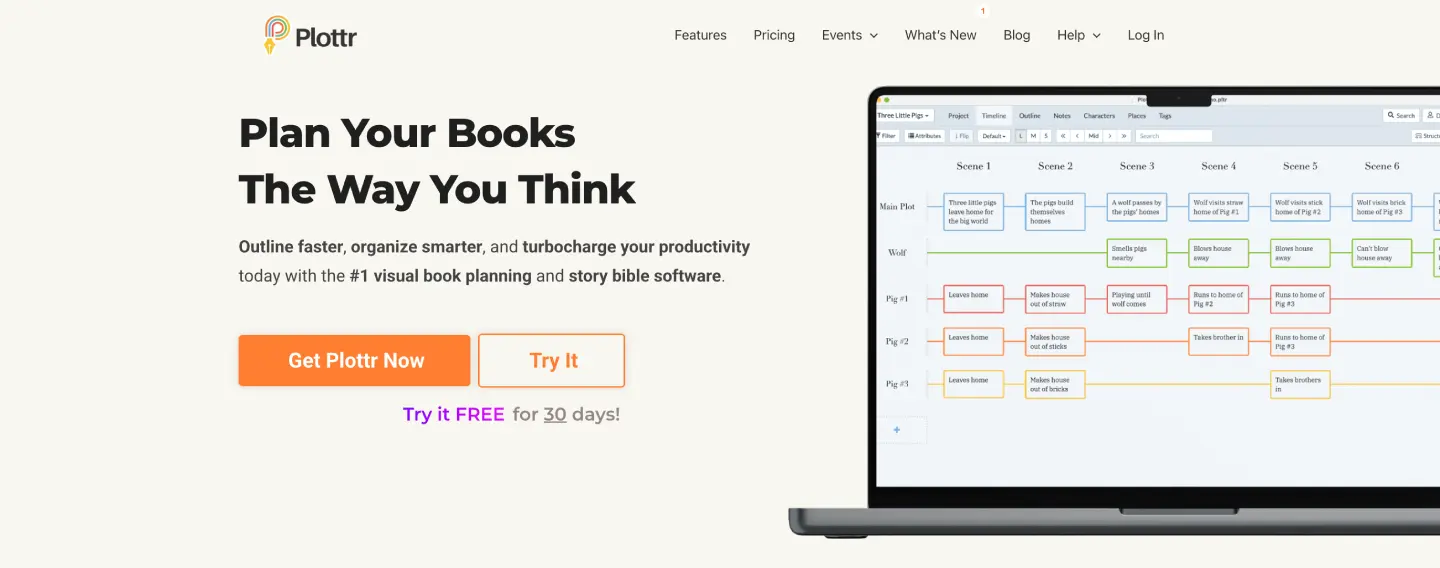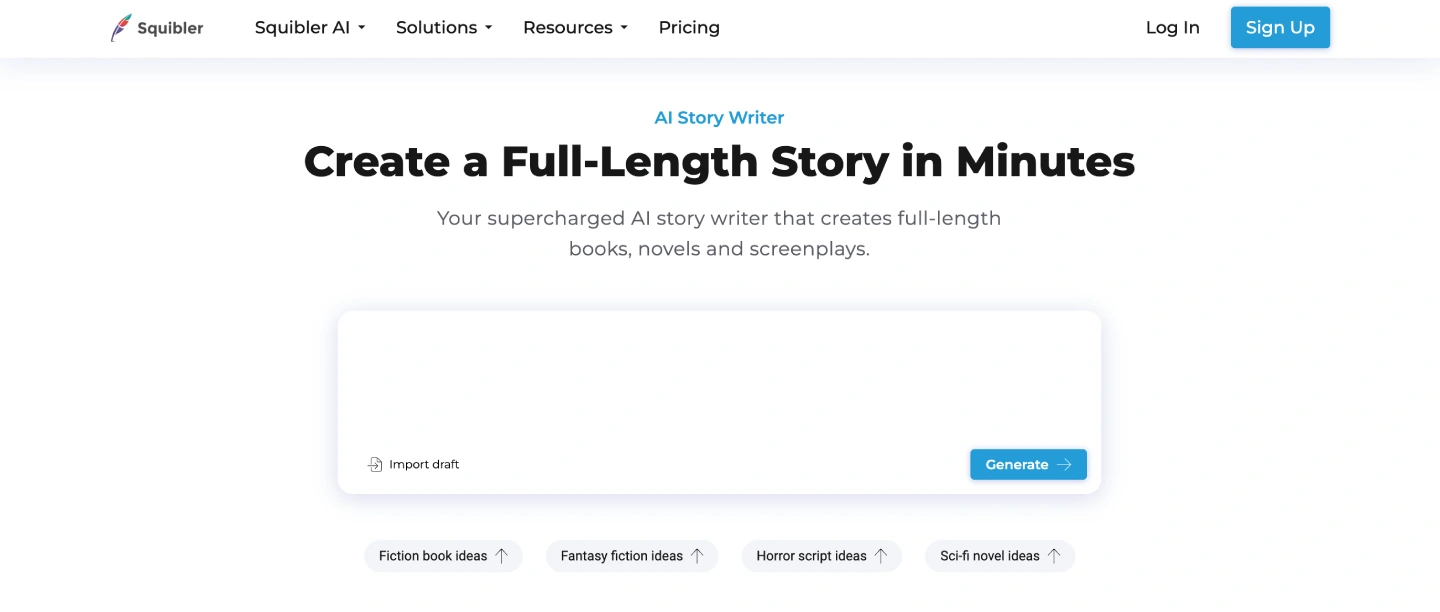A plot generator offers the perfect solution to overcome creative obstacles and discover fresh story ideas that spark your imagination. These AI-powered tools have revolutionized how writers approach story creation, providing endless combinations of characters, conflicts, and scenarios to jumpstart the creative process.
Modern story generators leverage artificial intelligence to analyze successful narrative patterns and generate unique plot combinations. Rather than replacing human creativity, these tools serve as brainstorming partners that help writers explore new directions and break free from repetitive storylines. The key lies in understanding how to effectively use plot generators and transform their output into compelling, original stories that captivate readers.
Understanding What is Plot Generators and Overcoming Writer's Block
Writer's block affects both novice and experienced authors, often stemming from pressure to create something entirely original or fear of developing clichéd storylines. Story idea generators address these challenges by providing random combinations of elements that push creative boundaries. These tools generate thousands of potential scenarios, helping writers discover unexpected connections between characters, settings, and conflicts.
The most effective random plot generators combine multiple storytelling elements systematically. They consider genre conventions, character archetypes, and narrative structures to create coherent starting points for story development. This approach ensures that generated ideas maintain logical foundations while introducing surprising twists that writers might not have considered independently.
Key benefits of using plot generators
- Breaking through creative barriers and mental blocks
- Discovering unique angle combinations for familiar genres
- Generating multiple story options for comparison and selection
- Providing structured starting points for character and world development
Top 3 AI Story Generators for Creative Writing
Selecting the best AI for creative writing depends on your specific storytelling needs and preferred workflow. Based on comprehensive analysis of leading plot generator platforms, three tools demonstrate exceptional capabilities for transforming writer's block into compelling story ideas. Each platform offers unique approaches to story generation, from structured templates to completely randomized creativity modes.
1. Plottr Templates: Structured Story Development
Plottr distinguishes itself through its systematic approach to plot generation using proven storytelling frameworks. The platform offers seven popular story structures including Freytag's Pyramid, the Hero's Journey, Three Act Structure, Dan Harmon's Story Circle, Fichtean Curve, Save the Cat Beat Sheet, and Seven-Point Story Structure. This book plot generator allows writers to select frameworks that align with their genre and storytelling preferences.
The platform's innovative "What If" methodology transforms basic templates into personalized storylines. Writers create plotlines labeled "What if" and add one question per card, generating dozens of exciting story directions. This systematic questioning approach helps identify plot holes before writing begins, streamlining the development process significantly.
Key Plottr Features:
- Seven professional story structure templates for different genres
- Visual timeline view for organizing plot development systematically
- "What If" card system for exploring multiple story directions
- Color-coding capabilities for organizing and prioritizing ideas
- Integration with professional writing workflows and project management

2. Squibler: High-Volume Idea Generation
Squibler functions as a free random plot generator capable of generating thousands of story ideas quickly across multiple genres. The platform's standout feature is its "Try Dangerous Mode" option, which generates unpredictable prompts designed to challenge conventional thinking patterns and push creative boundaries beyond comfortable territories.
This story generator accommodates different creative approaches through both structured and unstructured generation modes. Writers can generate prompts within specific parameters or embrace complete randomness to discover unexpected narrative directions. The platform's rapid generation capability makes it ideal for brainstorming sessions and overcoming creative blocks.
Key Squibler Features:
- Thousands of rapid story idea combinations across genres
- "Dangerous Mode" for experimental and boundary-pushing prompts
- Free access to core generation features and capabilities
- Genre-specific generation including drama, romance, fantasy, and sci-fi
- Quick brainstorming support for immediate creative inspiration

3. ServiceScape: Customizable Creativity Levels
ServiceScape's story generator offers unique customization through creativity level selection, allowing writers to choose from Standard, Conservative, Innovative, Imaginative, Visionary, and Inspired modes. This flexibility accommodates different writing styles and comfort levels, making it suitable for both experimental writers seeking bold concepts and traditional authors preferring conventional narrative structures.
The platform extends beyond basic plot generation by including character profile creation and dialogue generation capabilities. This comprehensive approach helps writers develop complete story ecosystems rather than isolated plot points, supporting more thorough story development from initial concept through character implementation.
Key ServiceScape Features:
- Six creativity levels from Conservative to Inspired approaches
- Character profile generation for comprehensive story development
- Dialogue generation capabilities for authentic character voices
- Customizable story detail input for personalized plot creation
- Multi-purpose functionality for game designers, screenwriters, and novelists
Essential considerations when selecting plot generators
- Compatibility with your preferred writing software and workflow
- Genre specialization for horror, romance, fantasy, or general fiction
- Balance between structured guidance and creative freedom
- Integration capabilities with existing project management systems

Raw plot generator output requires significant development to become compelling narratives. The transformation process begins with selecting generated elements that resonate with your creative vision and discarding those that feel forced or inappropriate for your story goals. Focus on plot points that create genuine excitement and curiosity about potential character development.
Start by expanding the basic premise with specific details that ground the story in believable reality. Generic "a person discovers a secret" becomes more engaging as "a small-town librarian discovers their deceased grandmother's hidden correspondence with a famous author, revealing a literary scandal that could destroy reputations." This specificity creates immediate hooks that draw readers into the narrative.
Character motivation serves as the foundation for transforming plot outlines into emotional journeys. Generated scenarios often provide situations without explaining why characters make specific choices. Develop compelling reasons for character actions by exploring their backgrounds, fears, desires, and internal conflicts that drive plot progression naturally.
- Adding sensory details and specific settings to generic scenarios
- Creating logical cause-and-effect relationships between plot points
- Developing subplots that support and complicate main storylines
- Establishing stakes that matter personally to protagonists and readers
Adding Human Creativity and Character Depth
AI story writer tools excel at generating scenarios but cannot replicate the emotional intelligence and personal experience that create memorable characters. Human creativity transforms flat archetypes into three-dimensional personalities with distinct voices, believable flaws, and relatable struggles. This humanization process separates generated content from truly engaging storytelling.
Character depth emerges through contradiction and complexity rather than simple trait assignment. A generated "brave warrior" becomes compelling when portrayed as someone who fears emotional vulnerability more than physical danger. These internal contradictions create opportunities for character growth and reader investment in personal transformation journeys.
Dialogue represents another area where human creativity significantly enhances generated content. Plot generators might suggest conversation topics, but authentic dialogue requires understanding of individual speech patterns, cultural backgrounds, and relationship dynamics. Each character should possess a distinct voice that reflects their personality, education, and life experiences.
Emotional authenticity cannot be artificially generated but must be drawn from human understanding of psychological complexity. Writers should leverage personal experiences, observations, and empathy to create genuine emotional responses that resonate with readers facing similar challenges or relationships.
Strategies for enhancing AI-generated content
- Develop unique character backstories that explain current motivations
- Create unexpected character connections and relationship dynamics
- Add personal stakes that extend beyond plot-driven conflicts
- Incorporate themes that reflect universal human experiences
Best Practices for Using AI as Your Creative Partner
The most successful approach to using plot generators involves treating AI as a collaborative brainstorming partner rather than a complete solution provider. This partnership model maximizes both technological capabilities and human creativity while maintaining authorial control over story development. Set clear boundaries about which elements to accept, modify, or reject from generated content.
Effective prompting techniques significantly improve generator output quality. Instead of requesting vague "fantasy story ideas," provide specific parameters: "Generate ten urban fantasy plots involving magical practitioners hiding in modern corporate environments, with conflicts arising from magical and mundane world collision." Detailed prompts produce more targeted, usable results.
Regular evaluation and refinement keep generated content aligned with your creative vision and target audience expectations. Not every generated idea deserves development; focus on concepts that genuinely excite your imagination and align with your storytelling strengths. Quality storytelling requires selectivity and willingness to discard promising ideas that don't serve the overall narrative.
Document successful prompting strategies and generator combinations for future reference. Building a personal library of effective approaches streamlines the creative process and helps maintain consistency across multiple projects. This systematic approach transforms random generation into purposeful story development.
Best practices for AI collaboration
- Experiment with different generators to find preferred workflows
- Combine multiple generated elements to create unique story combinations
- Use generated content as starting points rather than complete outlines
- Maintain final creative control over all story development decisions
FAQs
Q1: Which AI plot generator is best for brainstorming short or novel-length plots?
A1: If you’re aiming for short story plot generation with design-ready output, Canva AI Story & Plot Generator is excellent for quick, genre-specific ideas and visual presentations. For novel-level plot outlines, Rytr, Writecream, and Generatestory offer more structured frameworks and deeper character integration.
A2: Yes — Writecream, Typli.ai, and Plot Generator tools like Vondy or AIAssistify.io offer free, no-login access with unlimited plot generation. Some may cap usage but still provide full features instantly.
Q3: Can I customize genre, character traits, or twist elements?
A3: Absolutely. Most tools ask for genre and setting upfront (e.g., sci-fi, romance), and some let you specify character motivations, conflicts, or plot twists—then generate a plot tailored to those elements. Generatestory and Writecream emphasize user input to craft plots aligned with your preference.
Q4: How do these tools differ from general AI storywriters like ChatGPT?
A4: Plot generators focus on outline structure, offering frameworks and pacing suggestions—while generalist tools like ChatGPT generate full narrative prose. Plot generators reduce trial‑and‑error by delivering structured story bones to expand on. In contrast, storywriters require more editing and structure guidance from the user.
A5: While the frameworks they use are common (e.g., three‑act, hero’s journey), most users find these tools useful as inspiration rather than finished work. Writers often customize and rework plots to add originality. Consistent with broader AI storytelling trends, the AI output serves as a starting point—not a final script.
Conclusion
Plot generators serve as powerful allies in the creative writing process, offering endless inspiration for overcoming writer's block and discovering fresh narrative directions. The three recommended AI tools—Plottr, Squibler, and ServiceScape—each provide unique strengths for different writing styles and project requirements. However, the true magic happens when writers combine generated content with human creativity, emotional intelligence, and personal experience.
Success with story generators requires understanding their role as brainstorming partners rather than replacement writers. The most engaging stories emerge from the collaboration between artificial intelligence capabilities and human creativity, where generated scenarios provide foundations for deeper character development and emotional authenticity. Writers who master this balance create compelling narratives that capture both the unexpected elements of AI generation and the emotional resonance that only human storytellers can provide.
The future of creative writing lies not in replacing human creativity with artificial intelligence, but in leveraging technology to enhance and expand creative possibilities. Plot generators open doors to story territories that writers might never have explored independently, while human insight transforms these opportunities into memorable literary experiences that connect with readers on profound emotional levels.
 Submit Your AI Tool For FREE!Showcase Your Innovation To Thousands Of AI Enthusiasts!
Submit Your AI Tool For FREE!Showcase Your Innovation To Thousands Of AI Enthusiasts! Submit Your AI Tool For FREE!Showcase Your Innovation To Thousands Of AI Enthusiasts!
Submit Your AI Tool For FREE!Showcase Your Innovation To Thousands Of AI Enthusiasts! Submit Your AI Tool For FREE!Showcase Your Innovation To Thousands Of AI Enthusiasts!
Submit Your AI Tool For FREE!Showcase Your Innovation To Thousands Of AI Enthusiasts! Submit Your AI Tool For FREE!Showcase Your Innovation To Thousands Of AI Enthusiasts!
Submit Your AI Tool For FREE!Showcase Your Innovation To Thousands Of AI Enthusiasts! Submit Your AI Tool For FREE!Showcase Your Innovation To Thousands Of AI Enthusiasts!
Submit Your AI Tool For FREE!Showcase Your Innovation To Thousands Of AI Enthusiasts!






No comments yet. Be the first to comment!